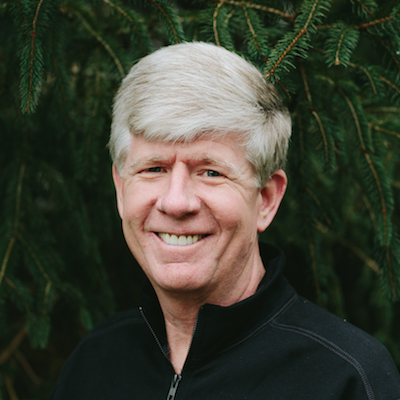One day, Alfred Nobel picked up the newspaper and read that he had supposedly died when, in reality, it was his brother who had passed away. As he read what the newspaper said about him, he realized he would forever be remembered primarily as the man who created dynamite. He was going to be remembered as the man whose invention had killed people. He decided he didn’t want to be remembered in that way. What did he do about it? He came up with the Nobel Peace Prize so he would be remembered for peace rather than death and destruction.
As Alfred Nobel did, why not take some time to consider your legacy. This could be one of the most important things you will ever do. Here are some things to think about as you contemplate your dreams and identify your goals. Take the time to think about these things and actually write down some answers to these three questions:
- What do you want your tombstone to say?
- When you die, what do you want to be said about you at your funeral? How do you want your spouse, children, friends, and coworkers to remember you?
- Based on your tombstone and obituary, what values should you be living out here and now?
After you’ve written down some thoughts about these questions, let me help you embark on what we refer to as the V.P.M.O.S.A. This process is one of the most powerful tools a transformational leader can adopt. You can do this process not only for yourself on a personal level, but you can also think about this through the lens of your organization and formulate the answers to the same questions.
Creating Your V.P.M.O.S.A.
V = Vision
What future reality are you pursuing? What do you aspire to or dream of accomplishing? Where are you going as a leader? Write down your thoughts. This is your vision statement.
P = Purpose
Why would you pursue this vision? Why are you here on earth? This is your purpose statement.
M = Mission
What are you willing to do that others may not be willing to do to bring your vision into reality? What sets you apart? That is your mission statement.
Just a note here. Please remember as you write out your vision, mission, and purpose statements not to get bound up in the semantics of which one is the mission, which one is the purpose, and which one is the vision. Just give thought to and answer the reflective questions above to the best of your ability.
O = Objectives
Next, identify three to five objectives that you want to accomplish in the next twelve to eighteen months to move you toward your vision, purpose, and mission. These objectives are your goals as a leader. After you have experienced this V.P.M.O.S.A. process for a while, then it would be good for you to think about and write down five to six other objectives on an annual or a regular basis. I suggest that you break down your objectives into four quadrants such as these:
- Family
- Work/income producing area
- Health (mental, emotional, physical, and spiritual)
- Community (where you give back with no expectation of anything in return)
I have found that when these four quadrants are in balance that I have a special place of peace and am more able to positively impact others. Balancing these areas does not mean making them equal. Different quadrants will take more or less of your time based on the season of life you are in. Let’s use the example of coaching a child’s sports team to show the kind of balance we’re talking about. This activity would combine the areas of family, community, and, if you do some of the running or workouts with the team, physical health. In that case you would be doing three of the four quadrants at the same time.
S = Strategies
Identify two to three strategies that can help you fulfill each objective/goal.
A = Actions
Now, identify specific actions you would need to take to implement each strategy within the next twelve to eighteen months. What are the specific actions that would be measurable if you executed these strategies? Again, don’t get bound up in the semantics of whether something is an objective, strategy, or action step. Just write them down and go for it.
Applying Your V.P.M.O.S.A.
This process will make it much easier for you to prioritize your life, causing your stress level to decrease significantly. It will help you simplify your decision-making processes. When there is a request for your time and energy, you simply ask yourself, “Will this help me to fulfill my vision? Would this type of activity line up with my vision, mission, and purpose? Would it impact what I want others to say about me at my funeral? Would it influence the words on my tombstone?”
One of the things that’s most important to me is my family. So, based on my V.P.M.O.S.A., if I get a phone call asking me to travel to consult, teach, or train, the first thing I do is to check with my wife. What would this commitment do to her schedule? What would this do to our schedule? What would this do to my schedule? Do my children have any important activities that are so important to them that I should not miss them?
The Value of Your V.P.M.O.S.A.
My V.P.M.O.S.A. becomes a very practical guide to both the big and the small decisions I make. I know if I don’t live and lead like this, what I’ve written down as my epitaph and obituary won’t happen.
As you prioritize your life and leadership in this way, people will observe your life and the results that you begin to achieve. You may begin hearing some comments from others who say how lucky they think you are. However, a V.P.M.O.S.A. doesn’t lead to luck. Luck is where the pathway of preparation intersects the pathway of opportunity. Over time, as we are prepared and opportunity appears, we will see that these intersections become points of destiny. It’s really not about luck. It’s about preparation meeting opportunity. That’s what moves us toward the destiny we desire. That’s how your V.P.M.O.S.A. prepares you for opportunities that come your way.
People often tell me how much they wish they had done this V.P.M.O.S.A. process sooner. I can relate to that. The first time I went through this process, I ended up on the floor weeping as I compared what I had written down with what my life reflected in reality. Your life may not be as messed up as mine was relationally, so you may not experience this. But, if you shed some tears, get comfortable with that. Those tears can help with the healing process.
I’d encourage you to make getting this done a top priority. If you’ll take the time to write down your V.P.M.O.S.A., you’ll be able to look forward expectantly toward your vision. You’ll also be able to look back on your life and see that those points from your past may not have been good luck or bad luck. Most likely, they were points of destiny that were moving you toward the fulfillment of the vision you’ve written down. Enjoy the process of creating your own V.P.M.O.S.A. You’ll see this leadership tool is one of the most effective steps you can take in becoming a transformational leader.
Ford Taylor is a leadership strategist, keynote speaker, and the author of Relactional Leadership. As the Founder of Transformational Leadership, he is known as a man who can solve complex business issues, with straightforward practical solutions, while maintaining his focus on people.



